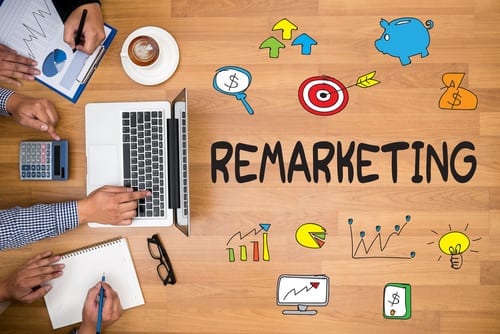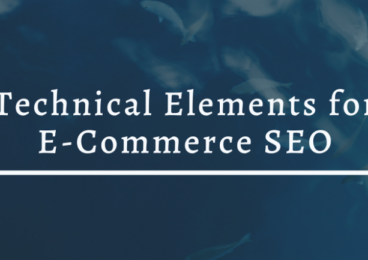 Reading Time: 5 minutes
Reading Time: 5 minutesRemarketing campaigns can be powerful channels for users who wish to digitally market their business. By showing ads to users after they leave the initial website, this strategy lets companies remain in contact with their visitors even after they’re gone. It also provides advertisers a way to encourage users to return to their website in an effort to increase traffic and sales. With a range of remarketing campaigns to choose from and the task of setting them up, it can be difficult to make an informed decision. A Google remarketing campaign is the first step to a successful business.
Why Remarket with Google?
In today’s world, consumers conduct thorough research before making online purchases. This means most visitors aren’t finished with your site in one visit. They will likely browse between your site and that of your competitors. Google remarketing, also known as retargeting, shows a company’s value. It also keeps your website in the front of users’ minds. As an added bonus, this remarketing strategy is highly cost effective and helps level the playing field between small businesses and large corporation.
What Are the Different Types of Remarketing?
Google offers several different types of remarketing strategies. They include:
- Strictly shows ads to previous site visitors as they browse other sites and apps
- A step above standard, dynamic remarketing offers ads that include products or services viewed on your website
- Search ads. After they leave your website, ads are shown to past visitors as they do follow-up Google searches
- Shows ads to users who have watched your videos and returned to YouTube or other video streaming apps
- Customer List. After uploading client lists of your customers, you can show them ads when they sign into Google
How Much Does Retargeting Cost?
Depending on individual campaigns and strategies, Google Remarketing is one of the most cost effective methods a business can choose. Ads from industries that are more competitive cost an average of several dollars per click. On the higher end of the spectrum, some keywords can cost more than $50 a click. Other marketing ads, such as display or social, cost much less. Google uses a few other strategies in their remarketing to lower costs, anywhere from contextual targeting to frequency capping.
What Are the Benefits of Remarketing with Google?
No matter what a company seeks to gain with an Adwords campaign, there are benefits for everyone, such as:
- Reach people who have interacted with your business before through advertisements
- Remarketing lists. Create multiple lists focused on the individual’s specific marketing audience.
- Wider reach. Access anyone on these lists as they browse millions of websites
- Better pricing. Use Google’s auction feature to create campaigns that feature automated bidding for the best possible price of an ad
- Create ads for free and with ease with Ad Gallery.
- See how your ads are performing and the price paid.
- Users searching for your business see ads because they’ve viewed your site before.
Where to Begin
Start your remarketing efforts for your business by paying attention to your highest performing campaigns. This is a proven method because you’re already aware your offer works. Focusing efforts on more of a full-scale can be costly. Once you gain more experience, it’s easy to expand within your existing account.
Target an Audience
Remarketing with Google AdWords is essential for potential shoppers and existing customers alike. Before you tackle your campaign of choice, create a remarketing list. Market to this group first. You’ll want to target consumers who have made a purchase in the past or inquired about additional information regarding your product. You can also inform them of any sales or discounts currently ran by the business. Examples of different target audiences are:
- Website visitors. Visitors may not initially make a purchase, but more visitors increase awareness of your product.
- Product page visitors. These show specific products that users previously viewed.
- Cart abandoners. These people are already interested in your product. Offer free shipping or discounts to complete the sales cycle.
A step-by-step instruction of how to create a remarketing list with Google Adwords is available here.
Know Your Platforms
When working with AdWords, there are arrays of platforms one can choose to apply their remarketing. Common networks for display ads include:
- YouTube
- Apps
- Display network
- Gmail
- Remarketing search listings ads
Remember, it’s easier to remarket on certain networks when compared to others. Set up a campaign for each platform chosen.
Use Broad Keywords
In some cases, broad-match keywords aren’t great for initially marketing a business. However, when remarketing, they can actually be ideal. Since you’re only pursuing interested shoppers, you don’t need to worry about their ability to find you. This can reduce the cost of remarketing as well as efficiently engage consumers once again.
Choose Individual Pages and Sites
Especially when using the remarketing method, choose particular landing pages of your website. Keep in mind that not every page within your website has the same conversion goals. With Google AdWords, you can select a landing page based off performance. Business owners also have the option of viewing websites with the best conversion rates. This can be particularly helpful when preventing ads from showing up in areas that don’t work.
Create Banner Ads
When remarketing with Google, you have the option to create customized display banners for your business to take your website to the next level. You can add media such as videos or images so users have a visual of what your business offers. Use the free ad builder to utilize pre-existing templates with different sizes and formats from which to choose.
Bid Aggressively
The benefits of remarketing show that it’s worth bidding more than what you’d typically pay for the placement of ads. Prioritize your visitors and place higher bids for consumers that made it farther on your site. If someone left with an item in their shopping cart, they’re probably more likely to convert than someone who left after three seconds. Remember that retargeting your ads with Google leads to lower costs and higher conversation rates in the long-term.
Offer Exclusive Discounts
On certain occasions, online customers may exit a website with an unpurchased item in their shopping cart. This could mean someone or something interrupted them in the middle of the sale or they got distracted in the process. On the other hand, they could be having second thoughts about the product. With a Google remarketing campaign, business owners can reach out to these individuals and encourage completion of the sale. Users may be more likely to follow through when offered some kind of discount or incentive.
Less Is More
When choosing a remarketing strategy, it can be easy to think that more ads equal more sales. This isn’t always the case. Try to look at it from your audiences’ perspective. Seeing the same ad repeatedly can be a turn off and discourage shoppers who otherwise wouldn’t have viewed your product in a negative way. Avoid this problem with a Google remarketing campaign. With its frequency capping settings, you can set guidelines for how often an individual sees the same ad per week.
A remarketing Google campaign can be just the boost your website needs. Increase your business’s reach by leveraging all the tools you have at your disposal, and check out our Paid Media Services!
At Vizion Interactive, we have the expertise, experience, and enthusiasm to get results and keep clients happy! Learn more about how our status as a Google Partner, along with our PPC Management, Google Shopping Ads, Social Media Advertising, Amazon Advertising, and other Paid Media services can increase sales and boost your ROI. But don’t just take our word for it, check out what our clients have to say, along with our case studies.




